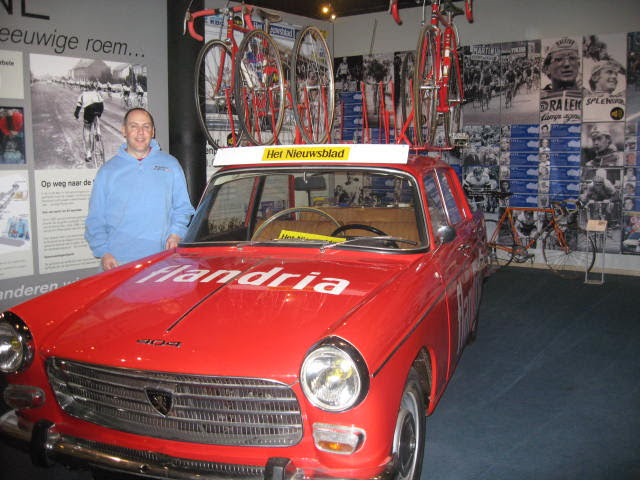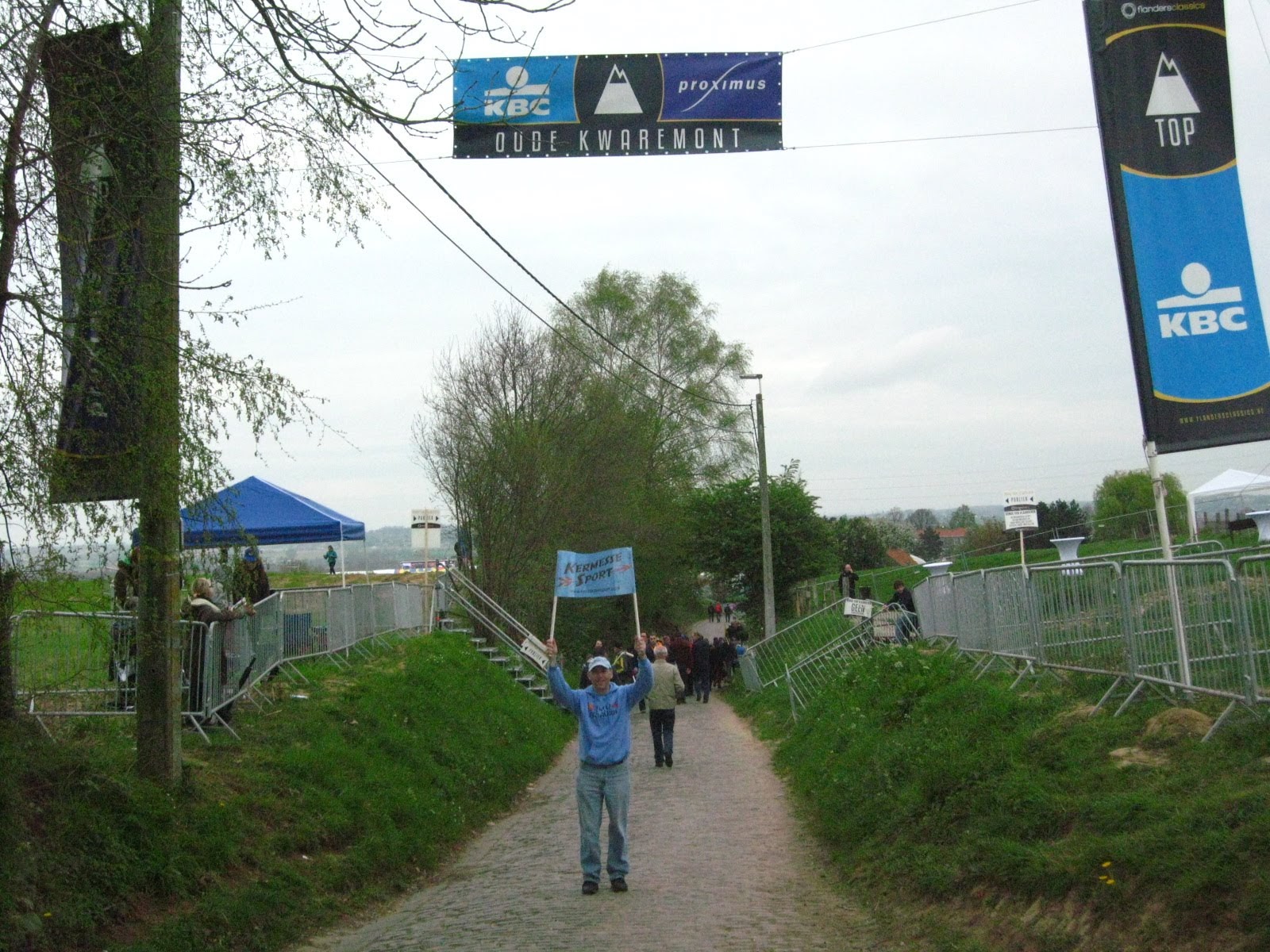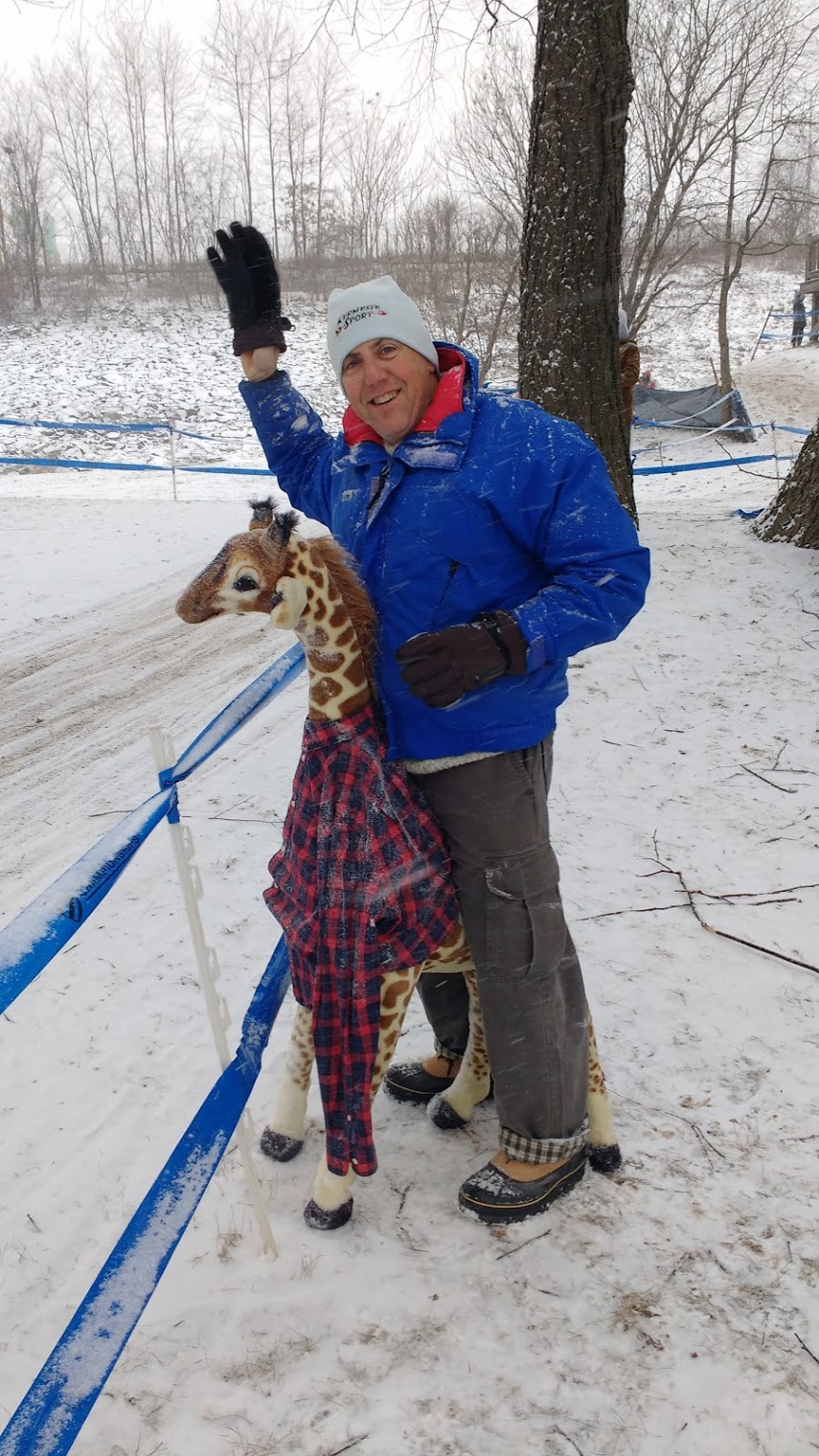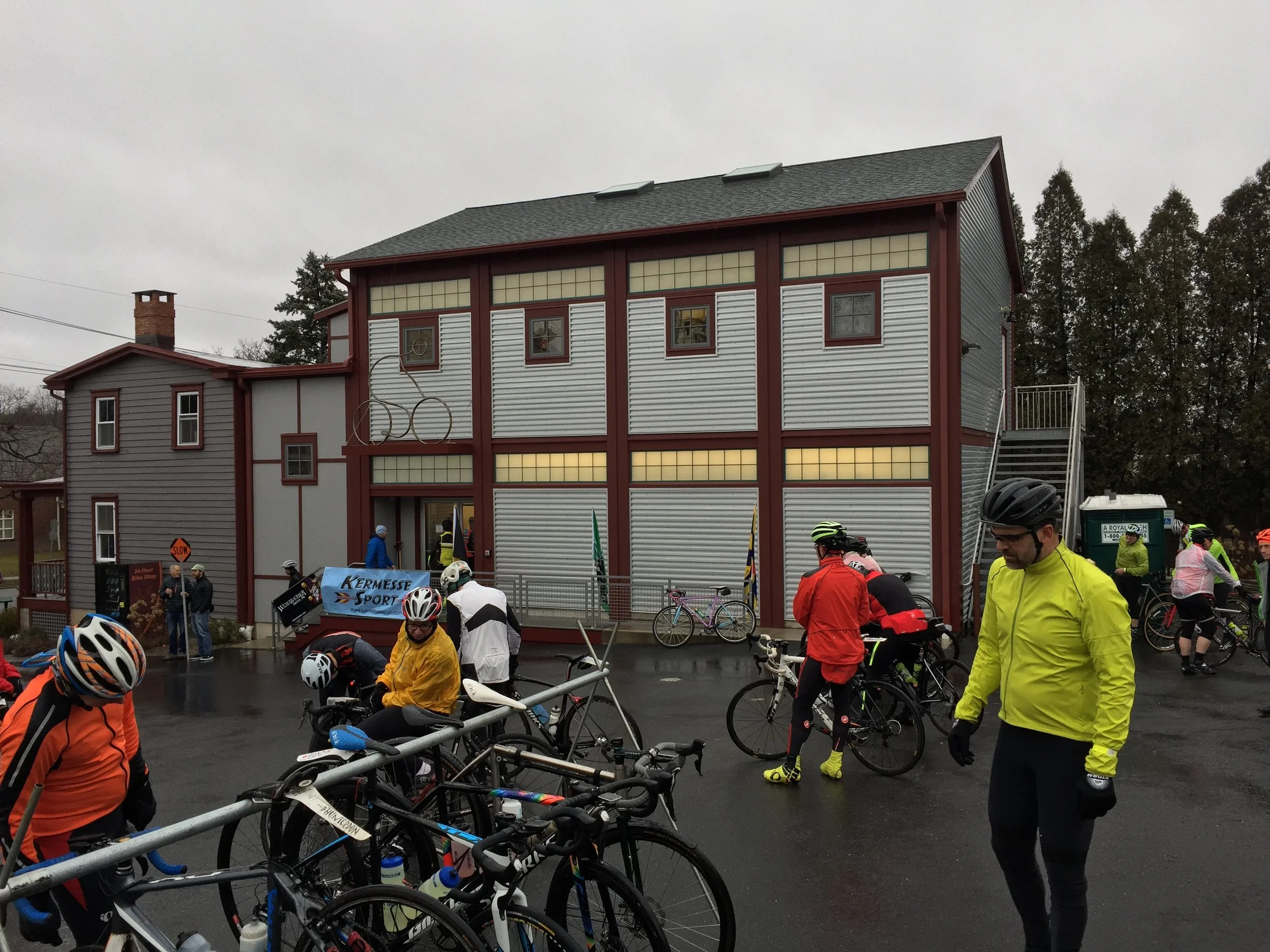Interviews: Brian Ignatin, Kermesse Sport Director - Or, Thoughts of an Event Coordinator (Part II)
In the second part of this two-part series, Brian Ignatin took time out of his busy spring classic schedule to talk about his past cycling experiences with both racing and event coordinating. Brian is the director of Kermesse Sport, responsible for such current events as The Hell of Hunterdon and worked past events such as the Corestates American Championship. This interview took place in person and via email.
Cover photo courtesy of Mike Maney Photography. Be sure to check out his work; he is a fellow cyclist in the Bucks County cycling community with multiple KOMs to his name. All other photos courtesy Brian Ignatin.
(2018) creakybottombracket.com: Working on the largest stages in cycling, what are some of the logistical behind-the-scenes lessons you took away and implement in your events?
Brian Ignatin: Despite the assertions of several former girlfriends, I am fairly observant; I can take a lot in. I might not notice a haircut or a new shirt, but I understand logistics and technical details. I can watch a race on TV and see the course arrows and technical signs. I have a good idea of what works and what doesn’t at events.
I was very fortunate to come up in the early days of the modern Pro Cycling scene, and had access behind the scenes as it was developing. Having competed in different regions, in different eras and in different countries, I was able to observe different manners of doing things. Working on the technical staff of several UCI races you learn a lot of rules and regulations events must comply with; many of them can be adapted for use in non-races. Since I also organized many low budget events, I learned how to make the most with what you have.
Riding up Libby Hill in Richmond, VA, as featured in the USGP and World Championship Courses
Logistics are logistics; in any event or business they are similar. It really comes down to thorough planning. As athletes, cyclists are tough, but at the same time many cyclists today (especially the pros) need a lot of hand holding, so you learn how to cater to them.
I think event directors need to understand why people enter their events. Yes, they want to ride your cool course, but the course is only part of it. Typically, the public can ride a course (presuming they know the route) any day of the year since the roads are generally public. What people are paying for is an experience, and to know that they are being looked after, particularly if they are riding in an area they are unfamiliar with.
I pay great attention to details, so the participants don’t have to worry about what to expect during our events. And while people may complain about the perceived high cost of entry fees (which are significantly lower than other comparable events), I strive to offer tremendous value, and consistency in organization. And while I design courses that people can ride on their own, they generally will not; so this makes them “special”.
If you look at our event websites, they may not be the fanciest, but they are rich in useful content. They have most of the details of the events; you’ll find the answers to 99% of the questions a participant might have. They are easy to navigate; you easily learn where to park, when/where to register, what the fee schedule is, what the course is.
We publish final instructions (which is a slimmed down version of a pro race technical guide) the week before the event, which have all of the details including cue sheets, gps data, links to maps, waivers, etc. We try to make it as easy as possible for someone to participate in the events; we worry and sweat the details, so that they don’t have to.
Wondering where Freddy Maertens left the keys at the Ronde van Vlaanderen Museum
It means marking the courses well and providing documentation so they don’t get lost. It means having technical support and SAG vehicles so that if they have a mechanical breakdown, we can do our best to get them back on the bike or transported back to the Start/Finish area. It means having plenty of food and water at the aid stations, so they don’t bonk or need to overly stuff their pockets in order to finish. Sometimes it is the small things; each aid station and SAG Wagon has a real first aid kit. They also have spare tubes and tires, which are provided to the participants without charge. The aid stations all have pumps, in case a rider needs to adjust their tire pressure.
cbb: How do you tie your cycling career experiences into Kermesse Events? What are some lighter details you add, and what are some obscure details you install?
Supporting Valentin Scherz at Granogue
BI: What I bring to my events is a lot of event experience from both on and off the bike.
Our courses are always challenging, but doable for serious cyclists with reasonable levels of fitness and confidence. We understand that cycling - racing in particular - attracts type A personalities; some participants take themselves way too seriously. I recognized early on in my racing career that there is always a bigger dog.
We recognize that this is a recreational activity for most and is supposed to be fun and social. Riders can suffer and hurt but still enjoy themselves, as long as the atmosphere is right, and there is something other than the challenge to look forward to. At our events, you rarely cross the finish line and immediately want to leave. As a participant you get out of the events what you put into them; you never finish and say, “And now what?”
This is why we offer excellent post ride food and craft beer in a low key environment. We want the post ride parties to be as enjoyable as the ride. Bonds formed on the road carry on after the ride is over. We want the participants to hang around and BS with each other about their experiences. We don’t limit food or drinks and offer options for participants to bring non-riding family members and friends. We don’t play background music, make unnecessary announcements, and try not to detract from the socializing.
““I hate when events nickel and dime participants... When you finish a ride, you don’t have to grab your wallet in order to get overpriced food from a slow-moving food truck.””
I hate when events nickel and dime participants. Our entry fees are generally all inclusive in terms of the event; there aren’t fundraising requirements or hidden fees; post ride food and drink is always included in the entry fee. When you finish a ride, you don’t have to grab your wallet in order to get overpriced food from a slow-moving food truck.
We also try to provide some levity along the course and sometimes elsewhere. Much of this goes over people’s heads, but they make those that get it laugh. For example, we’ve played homage to the Euro events by putting out Dirk Hoffmann Motorhome and LUC signs (Belgian fans/businesses trying to get attention on TV), Lion of Flanders Flags, and at one point HTFU signs. We’ve played the Belgian and Flemish National anthems instead of the Star Spangled Banner prior to the ride starts, and have had events started with the Rodania Jingle (Rodania is a watch company that sponsored many Belgian pro and amateur races. They provide a lead car that repeatedly plays the four- note jingle and sang 'Ro-Dan-I-A.' To many Belgians, the Rodania horn translates to “Get out of the way!”) The best reason not to be in a breakaway in a Flemish Kermis is that you don’t have to hear that jingle incessantly for 2+ hours!
A more obvious thing we did was put up signs on the steepest part of Eichele Rd (on the Oktoberfest course) that said “Blame Eustice” (referring to John Eustice, the race director of the Univest Grand Prix, which inspired the Oktoberfest Course) and “Brian Sucks.” If anyone was using the TCX files we provided, “Brian Sucks” also appeared on their Garmin screen or emanated vocally from the RideWithGPS App at a most inopportune moment on the climb; not that they would have necessarily noticed…
And some of the events have levity built in to the aid stations. How seriously can one take oneself if they are eating a maple cupcake or Swedish Fish during an event?
cbb: With all that detail comes a lot of time spent setting up weeks prior, days prior, and hours prior to the start. What are some of the pressing issues weeks and days prior to the event?
BI: A lot of logistics goes into the events that the participants don’t see. Food, beer, and police don’t magically appear, and the course signs don’t hang themselves.
The final two weeks prior to the event are long days focused on ensuring that everything is in place, that things go smoothly, and that people know where and when they need to be. This means contacting the volunteers with their report times and duties, reminding all of the municipalities and venues about the event, confirming the post times and instructions with the police and EMTs, making sure the caterers are ready to go, shopping for aid station supplies, deploying equipment and materials, and trying not to freak out about the ever changing weather forecasts.
Oude Kwaremont 2014 Ronde van Vlaanderen
We communicate with our participants much more so than most events, so a lot of time is spent behind the keyboard replying to email, updating the website, creating newsletters and publishing the final instructions. We also proof the course to make sure nothing needs changing, so we can publish accurate cue sheets and GPS data. This is why we don’t post final documents until the Wednesday or Thursday before the events.
With the course signs we need to mark the course the day before the event, since participants ride faster than the sign crews (10 - 12 mph), and it is almost impossible to do it in the dark.
cbb: Conversely, what time do you wake up on event day and what are some of the concerns that need to be addressed immediately that day?
““We were leaving the hotel before the bars closed- we were going to work when others were finally going home for the night.””
BI: The alarm time varies with each event based upon start time and level of set-up required. Generally I’m the first person on-site, and arrive 2 -3 hours before the start time. The two worst events in terms of wake up time that I’ve worked were the 1996 Olympics in Atlanta (where we worked through the night setting up barricades and hay bales) and the Philly Marathon a few years ago (where our call time was 2 AM; we were leaving the hotel before the bars closed- we were going to work when others were finally going home for the night).
For the Kermesse Sport Cycling events, it is important to me that the participants’ first points of contact on event day go well; this usually means parking and registration. If registration opens late or goes poorly, the whole day can slide from there. If people can’t find a place to park, they get anxious and run late.
I’m a stickler for starting on time; generally the only thing that holds us up are waiting for participants (late to register, stuck in bathroom lines). So usually the primary task is ensuring registration opens when we say it will. The participants can help by arriving early enough to get ready (park, change, register, go to the bathroom, etc.), realizing that the later they arrive, the longer the lines will be, and that this impacts everyone from the volunteers to the police.
Keeping people on course and well fed and hydrated is one of our primary missions once the event starts. We try to inspect all of the course signs, to make sure they didn’t disappear overnight, but this isn’t always possible. If signs go missing, it is really hard to replace them in time. This is an area where participants can help themselves by carrying cue sheets and utilizing the GPS data. We can’t predict when a sign is going to be stolen; at a Gran Fondo in Beverly Hills, CA, we had signs cut down three times in the same spot - every time we replaced them, someone would cut them down. Participants need to realize we did really mark everything; it isn’t like we decided to only hang 299 out of 300 signs.
2017 Cyclocross Nationals in Hartford, CT
But our overall biggest overall concern is for the participants’ enjoyment and safety. This is supposed to be fun, even if it “hurts” while they are doing it. Part of the fun is having challenging and technical courses, so we don’t dumb things down. But we don’t like to see riders get hurt, so we strive to reduce the number of hazards encountered due to the ever deteriorating public infrastructure.
cbb: With the amount of attention to detail, with the amount of work you have put into Kermesse Sport and Kermesse events, what is your biggest aspiration people come away from any or all of your events feeling? In other words, if you overheard a participant stating something, “I really liked the [Kermesse event] because…” what would you hope they finish that sentence with?
BI: ...everything was well organized, I felt completely supported, and I just had a fantastic time during the ride and after it was over. I can’t wait to do it again next year, and I’m going to bring some friends with me."
As of February 21, the Sourland Semi-Classic (February 25) is sold out, though Kermesse Sport still has available entries for the Hell of Hunterdon (March 18), Fools Classic (April 7), and Fleche Buffoon (April 28). Be sure to check kermessesport.com for the mid-summer event, Bastille Day Rondonnee based at V5 Cycles in Flemington, NJ.









